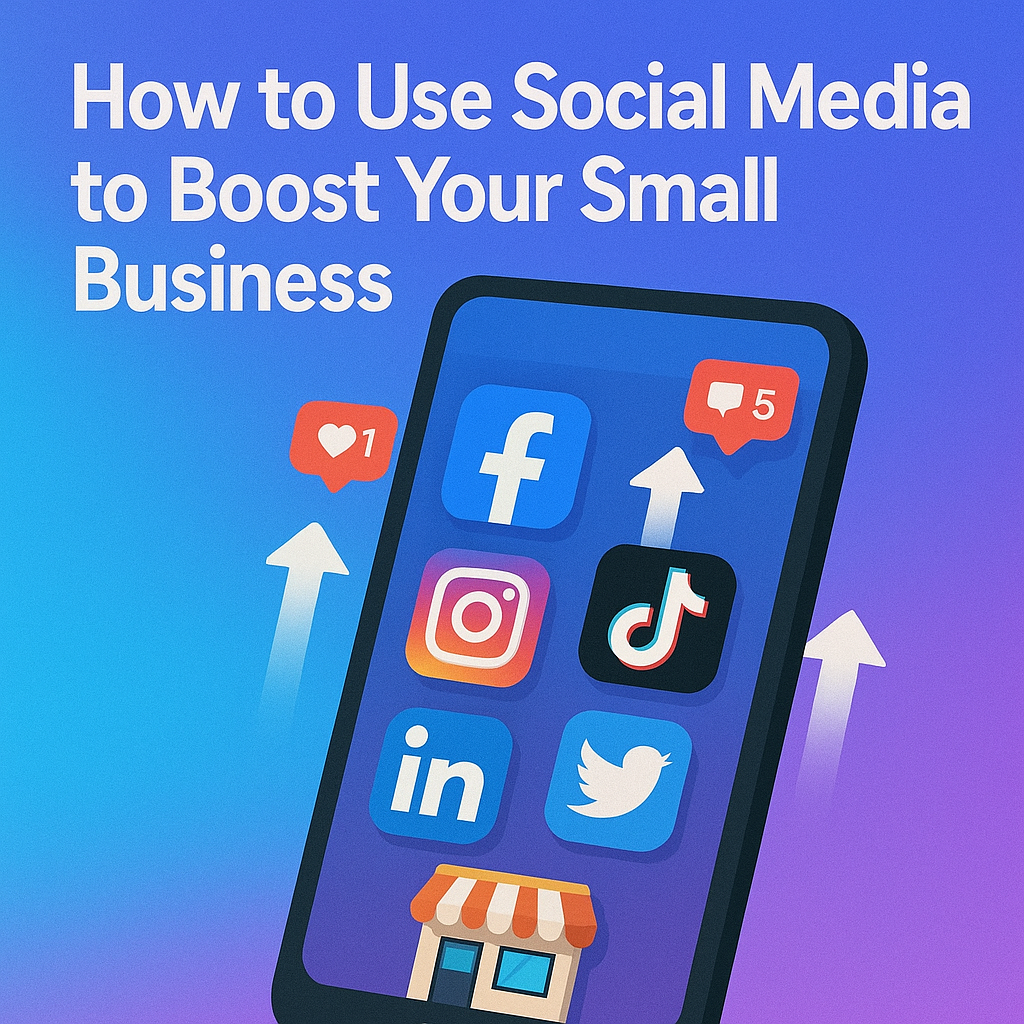In today’s digital age, social media has become one of the most powerful tools for small entrepreneurs. It provides a cost-effective way to reach potential customers, build brand awareness, and grow sales. Unlike traditional advertising, social media allows even the smallest businesses to compete with larger brands by building authentic connections with their audience.
This article will explore practical ways small entrepreneurs can use social media to boost their businesses effectively.
Why Social Media Matters for Small Entrepreneurs
Social media is not just about posting photos—it’s a business tool. With billions of users worldwide, platforms like Facebook, Instagram, LinkedIn, TikTok, and Twitter (X) allow businesses to:
- Increase visibility.
- Engage directly with customers.
- Showcase products and services.
- Drive traffic to websites or online stores.
- Collect feedback and improve offerings.
For small entrepreneurs, social media is an affordable way to compete with bigger players.
Step 1: Choose the Right Platforms
Not every social media platform will work for your business. Instead of trying to be everywhere, focus on the platforms where your target audience spends the most time.
- Facebook: Best for local businesses, communities, and older demographics.
- Instagram: Great for visual storytelling, fashion, food, and lifestyle brands.
- TikTok: Ideal for creative, short-form videos that can go viral.
- LinkedIn: Best for B2B businesses and professional services.
- Pinterest: Useful for niches like design, crafts, recipes, and home décor.
By focusing your energy, you’ll get better results without overwhelming yourself.
Step 2: Build a Consistent Brand Identity
Your social media should reflect your brand consistently. This builds trust and recognition.
Key elements of consistency:
- Use the same colors, fonts, and logo across all posts.
- Develop a tone of voice (friendly, professional, humorous, etc.).
- Post regularly, not randomly.
Customers should immediately recognize your content in their feed.
Step 3: Create Valuable Content
The key to social media success is providing value. Don’t just sell—educate, inspire, and entertain.
Types of content to share:
- Educational: Tips, how-to guides, or industry insights.
- Inspirational: Stories of success or motivational quotes.
- Entertaining: Behind-the-scenes videos, fun posts, or humor.
- Promotional: Product highlights, discounts, or announcements.
A good balance is 80% valuable content and 20% promotional.
Step 4: Engage With Your Audience
Social media is not one-way communication. Successful small entrepreneurs use it to build relationships.
Ways to engage:
- Reply to comments and messages quickly.
- Ask questions to encourage interaction.
- Run polls, quizzes, or giveaways.
- Share user-generated content (photos or reviews from customers).
Engagement makes customers feel valued and builds loyalty.
Step 5: Use Stories and Reels
Short, authentic content often performs better than polished ads. Stories on Instagram, Facebook, and TikTok Reels allow you to share daily updates, behind-the-scenes moments, and quick tips.
These formats are perfect for small businesses because they don’t require expensive production—just a smartphone and creativity.
Step 6: Leverage Paid Advertising
Organic reach (free posts) is powerful but limited. Paid ads help you reach a targeted audience quickly.
Tips for running ads:
- Start with a small budget ($5–10 per day).
- Use precise targeting (location, interests, age group).
- Test different ad creatives and track results.
Paid ads amplify your visibility and bring in leads faster.
Step 7: Track and Analyze Performance
Social media platforms provide analytics that shows which posts perform best. Tracking this helps you adjust strategies.
Metrics to monitor:
- Reach and impressions.
- Engagement (likes, shares, comments).
- Clicks to your website.
- Conversion rates (sales or sign-ups).
Focus more on what works and less on what doesn’t.
Step 8: Collaborate With Others
Collaboration can help small businesses expand their reach.
Ideas:
- Partner with local businesses for cross-promotions.
- Work with micro-influencers who have a loyal audience.
- Host live sessions with experts or other entrepreneurs.
Collaboration builds credibility and introduces you to new audiences.
Final Thoughts: Social Media as a Growth Engine
Social media is one of the most powerful tools available to small entrepreneurs. When used strategically—choosing the right platforms, posting valuable content, engaging authentically, and tracking performance—it can transform a small business into a thriving brand.
Remember: success doesn’t come from posting randomly, but from building relationships and delivering consistent value. With time, effort, and strategy, social media can be your business’s growth engine.
